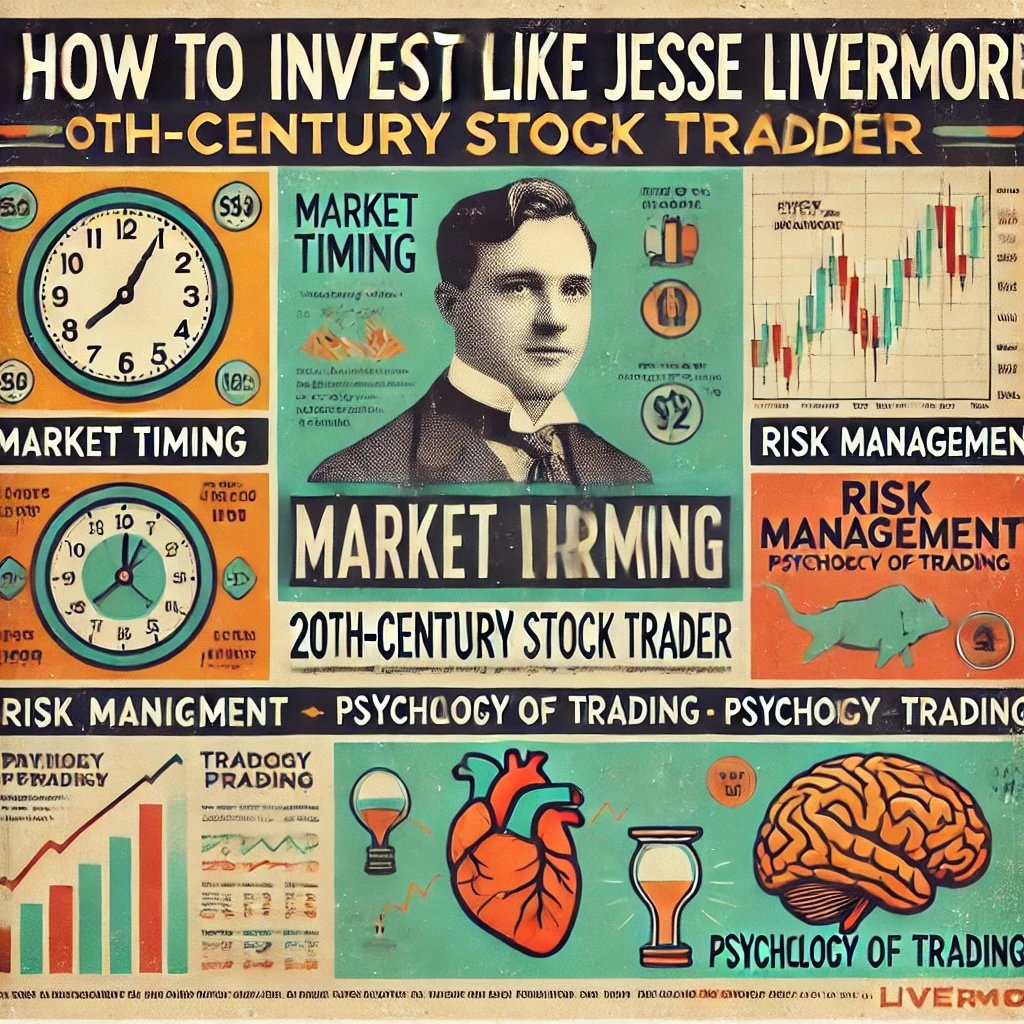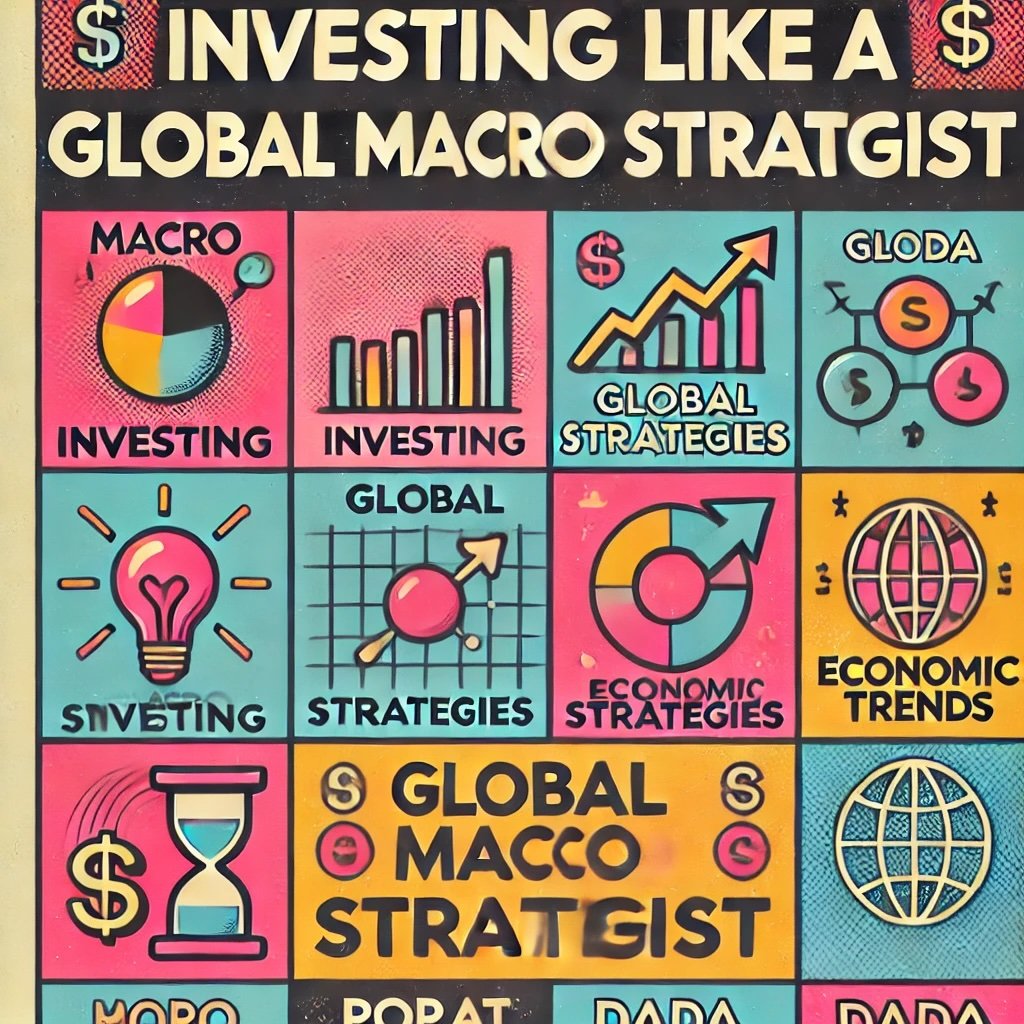In the complex tapestry of investment strategies that weave through the financial markets, factor investing emerges as a compelling pattern, distinguished by its simplicity and effectiveness. But what exactly is factor investing, and how has it evolved to become a cornerstone of modern portfolio construction? This introductory section will demystify factor investing, tracing its lineage from academic theory to practical application, and set the stage for a deeper dive into maximizing returns through strategic factor allocation.
Unraveling Factor Investing
At its core, factor investing involves targeting specific drivers of return across asset classes to enhance portfolio outcomes. These drivers, or “factors,” are quantifiable characteristics that have been shown to influence an asset’s performance relative to the broader market. Factor investing seeks to harness these attributes by systematically identifying and tilting towards securities that exhibit favorable factor qualities, such as value, size, momentum, quality, and low volatility.

A Journey Through Time: The Evolution of Factor Investing
The roots of factor investing stretch back to the early 20th century, but it was the groundbreaking work of economists Kenneth French and Eugene Fama in the 1990s that catalyzed its rise to prominence. Their research identified three key factors — market risk, size, and value — that explained the vast majority of returns in diversified portfolios. This work laid the groundwork for a new investment paradigm, transforming academic insights into actionable strategies that could be applied across global markets.
source: Excess Returns on YouTube
Over the years, the factor investing landscape has expanded to encompass a broader array of factors, each backed by empirical evidence and economic rationale. This evolution reflects the finance community’s ongoing quest to understand and capture the forces that drive market returns. Today, factor investing is not just an academic curiosity but a practical tool wielded by institutional and retail investors alike to achieve specific investment goals.

Understanding Factor Investing
Navigating the financial markets requires a compass. For many savvy investors, factor investing offers just that—a directional guide rooted in empirical research and economic rationale. This section delves into the essence of factor investing, demystifying the concept of factors and exploring why this investment approach not only resonates with modern portfolio theory but also aligns seamlessly with practical investment strategies.
The Anatomy of Factors
In the realm of investing, factors can be likened to the DNA of securities—they are fundamental attributes that drive performance. These characteristics, which can be measured and quantified, help investors understand why certain securities perform better than others over time. Factors are not random; they are grounded in decades of financial research and have been consistently linked with higher returns across various markets and periods.
The Pillars of Factor Investing
Several key factors have emerged as pillars of factor investing, each representing a unique dimension of risk and return. Here’s a brief overview of the most influential ones:
- Value: This factor is based on the principle that undervalued securities, relative to their fundamental worth, tend to offer superior returns over the long term. Investors who focus on value seek to capitalize on the market’s tendency to overreact to short-term developments, thereby overlooking the intrinsic value of certain assets.
- Size: Historical data suggests that smaller companies, as measured by market capitalization, often outperform larger counterparts over extended periods. This size premium is attributed to the higher risk associated with smaller firms, which can lead to greater rewards for investors willing to bear that risk.
- Momentum: Momentum investing is predicated on the idea that assets which have performed well in the recent past are likely to continue their upward trajectory in the near term. This factor captures the continuance of an asset’s price trend, harnessing the market’s collective psychology and behavioral biases.
- Quality: High-quality companies—those with robust profitability, low debt, and stable earnings—tend to outperform lower-quality counterparts. The quality factor focuses on the financial health and operational efficiency of firms, offering a buffer during economic downturns.
- Low Volatility: Contrary to conventional wisdom, securities with lower volatility have historically generated higher risk-adjusted returns than more volatile stocks. This factor challenges the traditional risk-reward paradigm, suggesting that less turbulent assets can be both safer and more lucrative.
The Economic Foundation: Why Factor Investing Works
The efficacy of factor investing is underpinned by a blend of risk-based and behavioral explanations. From a risk perspective, each factor represents a distinct form of compensated risk—investors are rewarded with higher expected returns for bearing additional risk associated with each factor. For instance, investing in smaller companies or undervalued assets entails specific risks that, over time, have been compensated by higher returns.
Behavioral theories complement this view by suggesting that market inefficiencies—stemming from investors’ psychological biases and emotional reactions—create opportunities for factor-based strategies to capitalize on predictable patterns in asset prices.
Together, these explanations form a compelling case for factor investing. By systematically identifying and targeting securities that exhibit desired factor characteristics, investors can potentially enhance returns, reduce risk, or achieve a combination of both, aligning their portfolios more closely with their financial goals and risk tolerance. In essence, factor investing is not just about picking winners but about understanding and leveraging the fundamental drivers of investment performance.

The Significance of Factor Investing
In the quest for optimal portfolio performance, factor investing emerges as a beacon of strategy, not just for its theoretical appeal but for its tangible benefits. This approach transcends traditional investment methods, offering a nuanced pathway to achieving diversification, enhancing returns, and mitigating risks. Supported by a wealth of empirical evidence, factor investing has cemented its place in the lexicon of modern finance. Let’s unpack the pivotal roles it plays.
Diversification: Beyond Conventional Wisdom
The adage “don’t put all your eggs in one basket” finds sophisticated expression in factor investing. By spreading investments across various factors, investors can achieve a level of diversification that is often unattainable through standard asset allocation alone. This method goes beyond mixing asset classes; it involves diversifying across sources of return and risk within the portfolio. For instance, combining value and momentum factors can potentially offset the cyclical nature of each, as they often perform well in different market environments. This nuanced diversification helps in smoothing portfolio returns over time, creating a buffer against market volatility.
Enhancing Returns: The Pursuit of Alpha
Factor investing stands out for its potential to enhance portfolio returns. By focusing on assets that exhibit specific, historically rewarded characteristics, investors aim to capture excess returns above the market average. Each factor represents a different pathway to alpha, or the active return on an investment, distinct from the broader market’s performance. For example, the size factor’s premise is that small-cap stocks, over time, outperform their larger counterparts, offering an avenue for boosted returns. This targeted approach allows investors to construct a portfolio tailored to their return objectives, leveraging the enduring power of factors.
Mitigating Risks: A Strategic Shield
Reducing portfolio risk is another cornerstone of factor investing. By identifying and investing in factors that are less correlated with each other and with the broader market, investors can construct a portfolio that is less susceptible to systemic risks. For instance, the low volatility factor focuses on securities that historically have had smaller price swings, which can be particularly appealing during turbulent market periods. This strategic component of factor investing not only aims to preserve capital but also to provide a smoother investment journey, mitigating the impact of market downturns.
Empirical Support: The Foundation of Confidence
The backbone of factor investing is the extensive empirical evidence supporting its principles. Numerous academic studies and real-world applications have demonstrated the persistent performance of certain factors across different time periods and geographical regions. This research has not only validated the existence of factors but also clarified their behavior and influence on portfolio outcomes. The enduring nature of factor premiums, despite evolving market conditions, offers investors a framework grounded in robust analysis rather than fleeting market trends.

Identifying Key Investment Factors
In the constellation of investment strategies, factor investing shines brightly, guided by empirical evidence and practical outcomes. At the heart of this approach are key factors—value, size, momentum, quality, and low volatility—each offering unique pathways to potentially enhance returns and manage risk. Let’s delve into each of these pillars, uncovering their essence and historical performance.
Value: The Art of Spotting Hidden Gems
Value investing is predicated on the belief that the market occasionally overlooks the true worth of companies, offering savvy investors an opportunity to buy undervalued assets with the expectation of future appreciation. This factor is typically measured by ratios such as price-to-earnings, price-to-book, and price-to-sales. Historically, value stocks have outperformed their more expensive counterparts over long periods, although they can go through extended periods of underperformance, highlighting the need for patience and conviction in this strategy.
Size: Small Giants in the Making
The size factor posits that smaller companies, as defined by market capitalization, tend to outperform larger firms over the long term. This phenomenon, often referred to as the “small-cap premium,” is attributed to the higher growth potential and nimbleness of smaller companies, which can adapt more quickly to changing market conditions. Despite their potential for higher returns, small-cap stocks carry greater risk, including higher volatility and less liquidity, underscoring the importance of a balanced approach.
Momentum: Riding the Wave of Success
Momentum investing captures the tendency of assets that have performed well in the recent past to continue their outperformance in the near term. This factor leverages the market’s behavioral biases, such as herd behavior and investor overreaction. Momentum is typically measured using past returns over periods ranging from three to twelve months. While historically successful, momentum strategies can reverse sharply, requiring disciplined risk management and timely rebalancing.
Quality: The Foundation of Excellence
Quality investing focuses on companies with strong fundamentals, including high profitability, low debt, and consistent earnings growth. These firms are often more resilient during economic downturns and can provide stable, long-term returns. Quality is a factor that appeals to conservative investors looking for sustainable performance rather than speculative gains. Historically, high-quality companies have offered investors a combination of risk reduction and return enhancement, making this factor a cornerstone of many diversified portfolios.
Low Volatility: The Quiet Achievers
The low volatility factor challenges the traditional risk-return trade-off by demonstrating that stocks with lower volatility can deliver higher risk-adjusted returns than their more volatile counterparts. This factor attracts investors seeking a smoother investment experience, especially those with a lower tolerance for risk. Low volatility strategies focus on minimizing the ups and downs of portfolio value, and historically, they have provided more stable returns and better protection in market downturns.

Crafting a Factor-Based Portfolio
In the dynamic world of investing, constructing a portfolio that resonates with your financial goals and risk tolerance is both an art and a science. Factor investing, with its roots deeply embedded in empirical research, offers a structured approach to portfolio construction. This section outlines a roadmap for investors ready to embark on the factor investing journey, emphasizing the selection of factors, integration into a diversified portfolio, and the critical role of factor correlation.
Step 1: Define Your Investment Goals and Risk Tolerance
The cornerstone of any investment strategy is a clear understanding of your financial objectives and how much risk you are willing to accept. Are you seeking growth, income, or a combination of both? Is your investment horizon short, medium, or long-term? Your answers to these questions will guide your factor selection process.
Step 2: Identify and Select Relevant Factors
With your goals and risk profile in hand, turn your attention to the universe of factors. Value, size, momentum, quality, and low volatility are the primary candidates, but which should you choose? The key is to align factors with your objectives:
- For growth, consider momentum and size.
- For income and stability, value and quality may be more appropriate.
- For risk mitigation, look towards low volatility.
Research each factor’s historical performance, understanding the conditions under which each tends to thrive or falter.
Incorporating Multiple Factors
No single factor delivers superior returns under all market conditions, which is why incorporating multiple factors into your portfolio is paramount. This diversification can help smooth out returns over time, as different factors will shine under different economic scenarios. A multi-factor approach also mitigates the risk of overexposure to any single factor’s potential downturn.
Balancing Your Factor Exposures
Once you’ve selected your factors, the next step is to balance them within your portfolio. This doesn’t necessarily mean equal weighting; rather, the weighting should reflect your investment goals and the expected performance of each factor. Consider using factor-based ETFs or mutual funds to achieve the desired exposure, paying close attention to the underlying assets to avoid unintended concentration risks.
The Role of Factor Correlation in Portfolio Construction
Understanding how different factors interact is crucial for building a robust factor-based portfolio. Factors that are highly correlated may respond similarly to market conditions, reducing the diversification benefits. Conversely, factors with low or negative correlations can offer a hedge against volatility.
For instance, the momentum and value factors often exhibit low correlation to each other, as do quality and size. Incorporating factors with varying correlations can help stabilize portfolio returns, making your investment journey less turbulent.
Continuous Assessment and Adjustment
Factor performance is not static; market dynamics shift, and so do factor correlations and effectiveness. Regularly assessing your portfolio’s factor exposures and adjusting as necessary is crucial for maintaining alignment with your investment objectives and adapting to changing market conditions.

Navigating Factor Investing Strategies
Factor investing, a strategy that has gained momentum among a broad spectrum of investors, offers multiple pathways to potentially enhanced returns and risk management. However, navigating through the myriad of approaches—passive vs. active, single-factor vs. multi-factor, and DIY factor portfolios—requires a strategic mindset. This section explores these strategies, helping investors align their approach with their investment goals, expertise, and commitment level.
Passive vs. Active Factor Investing
Passive factor investing involves selecting ETFs or mutual funds that aim to replicate the performance of a specific factor index. This approach benefits from lower costs, as it doesn’t entail the frequent buying and selling of securities. Investors favoring a hands-off strategy, or those looking for exposure to specific factors without the complexity of active management, may find this approach appealing. The passive route promises transparency and simplicity, making it a suitable choice for those new to factor investing or with a long-term investment horizon.
Conversely, active factor investing seeks to outperform the market by strategically selecting stocks or other securities that demonstrate strong factor characteristics. This method requires a deeper market understanding, as it involves analyzing securities for factor traits and timing the market to capitalize on factor cycles. Active factor investing can potentially offer higher returns, but it comes with increased risk and higher costs due to active management fees and trading expenses. This strategy is suited for those who have a robust understanding of market dynamics and are comfortable with taking on additional risk for the possibility of higher rewards.
Single-Factor vs. Multi-Factor Approaches
Single-factor ETFs and mutual funds provide exposure to one specific factor, such as value or momentum. This focused approach allows investors to tailor their portfolios based on their conviction about the performance of a particular factor. It also enables investors to adjust their exposure as market conditions change. However, relying solely on one factor can lead to periods of underperformance, as no single factor outperforms in all market environments.
Multi-factor ETFs and mutual funds combine several factors in one investment, seeking to balance the risk and return by diversifying across different sources of potential alpha. This strategy aims to mitigate the volatility associated with single-factor investments, offering a more stable performance over time. Multi-factor investing is particularly appealing for those seeking a diversified approach within a single investment product, although it requires an understanding of how factors interact and complement each other.
DIY Factor Investing: The Customized Approach
For investors with the inclination and expertise to delve deeper, creating a DIY factor-based portfolio using individual stocks offers the ultimate level of customization. This hands-on approach involves selecting stocks that exhibit strong factor characteristics, such as high-quality companies or undervalued stocks. While this strategy provides the flexibility to tailor investments to precise specifications, it demands significant time, research, and a solid grasp of fundamental and technical analysis.

Navigating the Complexities of Factor Investing
Embarking on a factor investing journey equips investors with a powerful set of tools for portfolio enhancement and diversification. However, like any sophisticated investment strategy, factor investing comes with its unique set of challenges and considerations. Understanding these intricacies is paramount for investors aiming to harness the full potential of factor investing while mitigating associated risks.
The Conundrum of Factor Timing
One of the most significant challenges in factor investing lies in factor timing—the attempt to predict which factors will outperform at any given time. Despite the allure of timing the market to capitalize on factor rotations, this endeavor is fraught with difficulty. Factors can exhibit prolonged periods of underperformance followed by sharp reversals, making timing attempts risky and often counterproductive.
Investors must recognize the inherent unpredictability in factor performance, influenced by economic cycles, market sentiment, and global events. Embracing a long-term perspective and resisting the temptation to chase short-term factor trends can be a more prudent approach, aligning with the foundational principles of factor investing.
Mastering Risk Management
Effective risk management is crucial in navigating the multifaceted landscape of factor investing. Each factor carries specific risks—value stocks may remain undervalued for extended periods, while momentum stocks can quickly reverse course. Understanding these nuances and the interplay between different factors is vital for constructing a balanced portfolio.
Diversification across multiple factors is one strategy to mitigate individual factor risks. Additionally, incorporating low-correlation assets and periodically reassessing factor exposures can help smooth portfolio volatility and protect against market downturns.
The Cost Factor
While factor ETFs and mutual funds offer convenient access to factor strategies, they come with their own cost considerations. Expense ratios, transaction fees, and potential tax implications can all impact net returns. Passive factor ETFs generally have lower costs compared to actively managed factor funds, but the trade-off comes in the form of less flexibility and potential for underperformance relative to a well-timed, active approach.
Investors must diligently assess the cost structure of any factor-based investment product, comparing it against expected returns and considering the impact on overall portfolio performance. In some cases, the benefits of factor exposure may justify higher costs, but this calculation should be made with a clear understanding of the fee landscape.

The Evolving Landscape of Factor Investing
As we peer into the horizon of the financial markets, factor investing stands at the cusp of a new era, propelled by continuous research, technological innovation, and an ever-growing appetite for sophisticated investment strategies. The future of factor investing is bright, marked by the emergence of new factors, the transformative impact of technology, and the importance of staying informed and adaptable. Let’s explore these dynamics that are set to shape the trajectory of factor investing.
Uncharted Territories: Emerging Factors and Research
The quest for new investment factors is an ongoing voyage, driven by academic research and real-world experimentation. As our understanding of markets deepens, so does our ability to identify and exploit sources of excess returns. Emerging factors such as ESG (Environmental, Social, and Governance) criteria are gaining traction, reflecting investors’ growing interest in sustainable and responsible investing. Similarly, factors related to innovation, brand strength, and even sentiment analysis are being explored for their potential to offer additional layers of portfolio diversification and return enhancement.
These areas of research not only expand the factor investing toolkit but also underscore the evolving nature of investment strategies in response to societal shifts and market dynamics. Investors and fund managers who keep abreast of these developments can gain an edge in crafting portfolios that resonate with contemporary themes and long-term trends.
The Digital Revolution: Technology’s Impact
Technological advancements are revolutionizing factor investing, from algorithmic trading and machine learning models that identify factor exposures, to blockchain technology enhancing transparency and efficiency in transactions. Big data analytics allows for the processing of vast amounts of information, uncovering insights that traditional analysis might miss. Artificial intelligence (AI) and machine learning are refining the selection and weighting of factor-based investments, making strategies more dynamic and responsive to market changes.
This digital revolution not only enhances the precision and performance of factor investing strategies but also democratizes access, enabling a broader spectrum of investors to leverage sophisticated tools once reserved for institutional players. As technology continues to evolve, its integration into factor investing promises to unlock new opportunities and reshape investment management practices.
Staying Ahead: Adapting to Change
In an era where information is abundant but insight is scarce, staying informed and adaptable is paramount for investors. Engaging with reputable financial research, attending industry conferences, and leveraging financial technology platforms can provide valuable perspectives on emerging trends and factor developments. Networking with peers and thought leaders in the investment community can also offer diverse viewpoints and strategies, enriching your understanding of factor investing’s evolving landscape.
Adapting to change requires an open mindset and a commitment to continuous learning. As new factors emerge and technology reshapes the investment process, investors should be willing to reassess and adjust their strategies, ensuring they remain aligned with their goals and responsive to the market’s pulse.

Factor Investing 101 — 12-Question FAQ (Practical Playbook)
1) What is factor investing in one sentence?
A systematic way to tilt a portfolio toward repeatable drivers of return (e.g., value, size, momentum, quality, low volatility) rather than picking single stocks.
2) Why do factors earn a premium?
Two main reasons: risk-based compensation (bearing distinct economic risks) and behavioral mispricing (persistent investor biases that create anomalies).
3) Which factors are the core “Big Five”?
Value, Size, Momentum, Quality, Low Volatility. Together they explain a large share of return differences across diversified equity portfolios.
4) When does each factor tend to shine—or struggle?
Value: Often leads after recessions/rate peaks; can lag in growth-led bull runs.
Size: Small caps shine early-cycle; can lag in risk-off regimes.
Momentum: Works in trending markets; whipsaws at sharp inflections.
Quality: Resilient in slowdowns and risk-off.
Low Vol: Defensive in drawdowns; may lag in roaring bull markets.
5) How should a beginner get exposure?
Start with low-cost factor ETFs (single-factor or multi-factor), add gradually, and review overlap so you’re not unknowingly doubling the same holdings.
6) Single-factor vs multi-factor—what’s better?
Single-factor = precision & control (but more cyclicality).
Multi-factor = smoother ride by blending complementary factors (e.g., value + momentum + quality).
7) How much should I allocate to factors?
Common ranges: 20–60% of equities for core portfolios. Conservative investors might start 10–30%, then scale as comfort and understanding grow.
8) What about bonds and alternatives—do factors exist there?
Yes. Examples include term, credit, value, quality in bonds; carry, trend/momentum in managed futures/FX/commodities—useful for diversification beyond equities.
9) How often should I rebalance factor exposures?
Typically quarterly or semiannually to control drift and turnover; use bands (e.g., ±20%) to reduce trading and taxes.
10) What pitfalls should I avoid?
Chasing last year’s winner (factor timing), paying high fees for commoditized tilts, ignoring capacity/liquidity, and neglecting tax efficiency.
11) How do I measure success?
Judge over full cycles (5–10 years) using risk-adjusted metrics (Sharpe/Sortino), max drawdown, and tracking error versus your policy benchmark.
12) What’s a simple starter recipe?
Core market beta (e.g., total-market ETF) + multi-factor ETF (value/momentum/quality blend) + small sleeve of low vol or size; rebalance twice a year.
Harnessing the Power of Factor Investing: A Strategic Odyssey
As we conclude our exploration into the realm of factor investing, it’s clear that this approach represents a significant evolution in the way individuals and institutions construct portfolios. Through a journey that has spanned the foundational elements, strategies, challenges, and future prospects of factor investing, we’ve uncovered a multifaceted landscape ripe with opportunities for discerning investors. Here’s a recap of the pivotal themes we’ve navigated, followed by some final thoughts on integrating factor investing into your financial strategy.
A Journey Through Factor Investing
We embarked on this voyage by defining factor investing and tracing its evolution from academic theory to mainstream application. We delved into the key factors—value, size, momentum, quality, and low volatility—and examined how these elements serve as the building blocks for crafting diversified portfolios aimed at enhancing returns and managing risk.
The discussion then transitioned to strategies for implementing factor investing, from passive and active approaches to the nuanced decisions between single-factor and multi-factor investments. We navigated the challenges inherent in factor timing, risk management, and the cost implications of adopting factor-based strategies.
Looking ahead, we envisioned the future of factor investing, marked by the emergence of new factors, the transformative impact of technology, and the importance of adaptability and continuous learning for investors seeking to navigate this evolving landscape.
Embracing Factor Investing in Modern Portfolios
Factor investing offers a sophisticated lens through which investors can view the market, providing a structured framework for understanding and capturing the drivers of returns. Its evidence-based foundation and adaptability make it a compelling approach for those looking to refine their investment strategy in pursuit of specific financial goals.
Incorporating factor investing into your portfolio isn’t just about embracing new investment products or chasing the latest market trends. It’s about adopting a deeper, more nuanced understanding of what drives market returns and how to effectively harness these forces in a disciplined, strategic manner.
A Call to Explore and Integrate
As the financial markets continue to evolve, so too does the toolkit available to investors. Factor investing represents a powerful component of that toolkit, offering pathways to potentially enhanced returns and more effective risk management. Whether you’re a seasoned investor or just beginning to explore the complexities of the market, factor investing warrants consideration as part of a diversified investment strategy.
I encourage you to delve further into the principles of factor investing, challenge your assumptions, and consider how this approach might fit within your broader investment philosophy. With a commitment to education, an open mind, and a willingness to adapt, you can leverage the insights of factor investing to craft a portfolio that is not only aligned with your financial objectives but also resilient in the face of market volatility.
In the dynamic world of investing, knowledge is your most valuable asset. Embrace the journey, continue to seek out new learning opportunities, and consider how factor investing can enhance your strategy in the quest for financial success.
Important Information
Comprehensive Investment Disclaimer:
All content provided on this website (including but not limited to portfolio ideas, fund analyses, investment strategies, commentary on market conditions, and discussions regarding leverage) is strictly for educational, informational, and illustrative purposes only. The information does not constitute financial, investment, tax, accounting, or legal advice. Opinions, strategies, and ideas presented herein represent personal perspectives, are based on independent research and publicly available information, and do not necessarily reflect the views or official positions of any third-party organizations, institutions, or affiliates.
Investing in financial markets inherently carries substantial risks, including but not limited to market volatility, economic uncertainties, geopolitical developments, and liquidity risks. You must be fully aware that there is always the potential for partial or total loss of your principal investment. Additionally, the use of leverage or leveraged financial products significantly increases risk exposure by amplifying both potential gains and potential losses, and thus is not appropriate or advisable for all investors. Using leverage may result in losing more than your initial invested capital, incurring margin calls, experiencing substantial interest costs, or suffering severe financial distress.
Past performance indicators, including historical data, backtesting results, and hypothetical scenarios, should never be viewed as guarantees or reliable predictions of future performance. Any examples provided are purely hypothetical and intended only for illustration purposes. Performance benchmarks, such as market indexes mentioned on this site, are theoretical and are not directly investable. While diligent efforts are made to provide accurate and current information, “Picture Perfect Portfolios” does not warrant, represent, or guarantee the accuracy, completeness, or timeliness of any information provided. Errors, inaccuracies, or outdated information may exist.
Users of this website are strongly encouraged to independently verify all information, conduct comprehensive research and due diligence, and engage with qualified financial, investment, tax, or legal professionals before making any investment or financial decisions. The responsibility for making informed investment decisions rests entirely with the individual. “Picture Perfect Portfolios” explicitly disclaims all liability for any direct, indirect, incidental, special, consequential, or other losses or damages incurred, financial or otherwise, arising out of reliance upon, or use of, any content or information presented on this website.
By accessing, reading, and utilizing the content on this website, you expressly acknowledge, understand, accept, and agree to abide by these terms and conditions. Please consult the full and detailed disclaimer available elsewhere on this website for further clarification and additional important disclosures. Read the complete disclaimer here.





